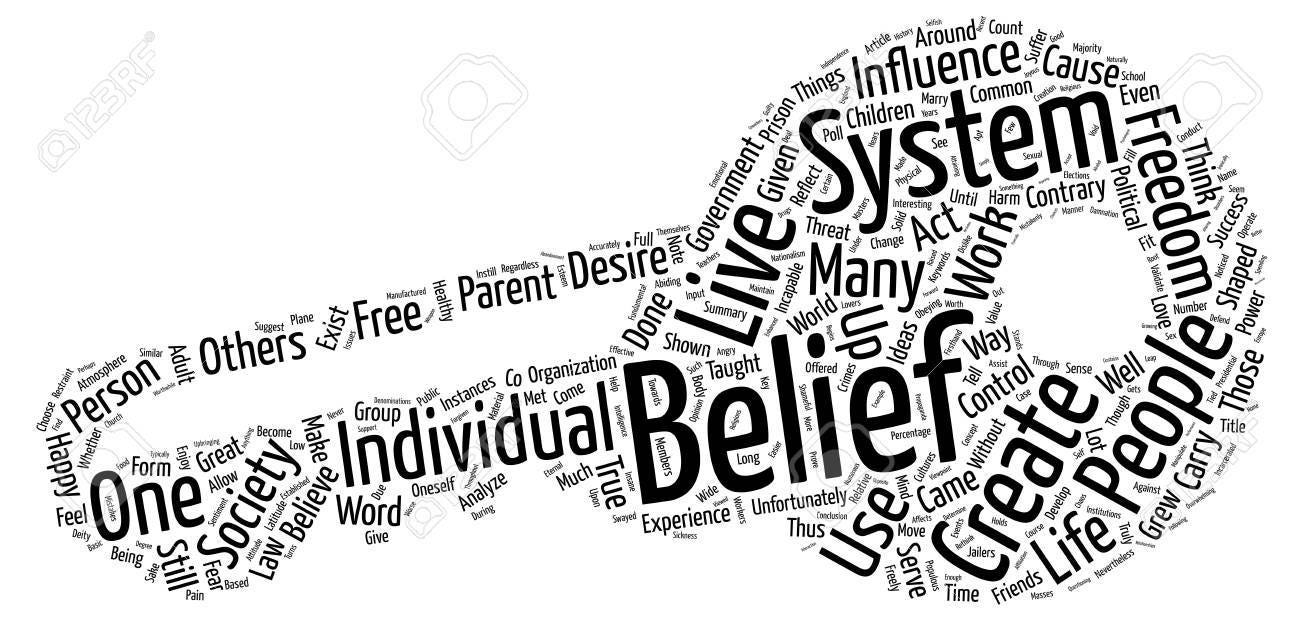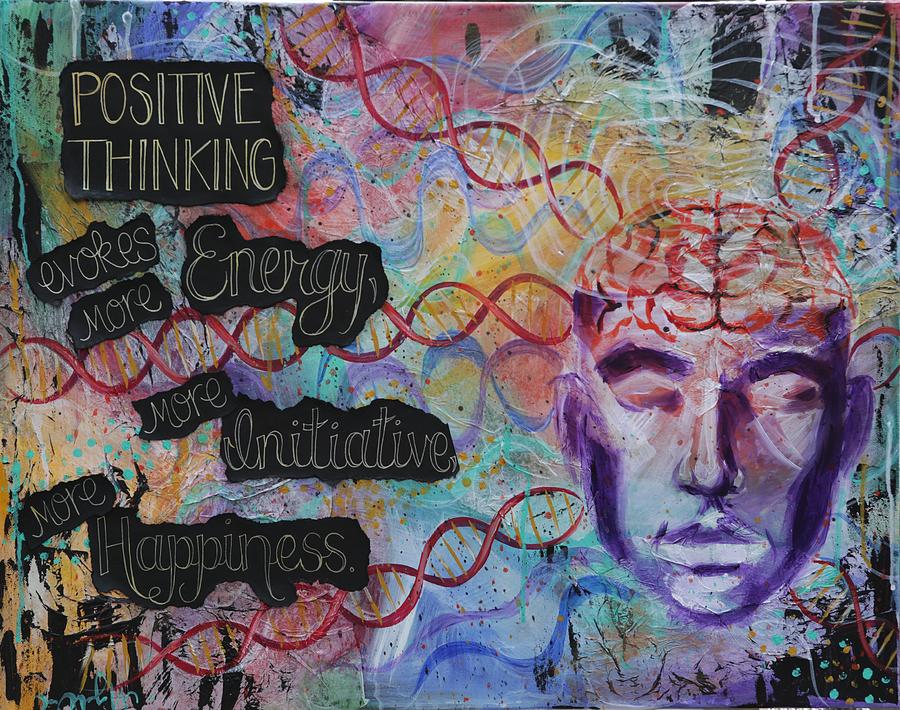In the journey of redesigning your personality, the pivotal role of thoughts as the seeds of belief cannot be overstated. Understanding that beliefs shape perception, speech, and ultimately personality, underscores the importance of cultivating positive and constructive thoughts. By aligning beliefs with authenticity, fostering self-awareness, and embracing vulnerability as a strength, one can embark on a path of continuous self-improvement. Through mindfulness and seeking balance and harmony in all aspects of life, individuals can not only correct their thoughts but also shape a more authentic and fulfilling personality.

I. Introduction
A. Explanation of the Concept: Thoughts Shape Beliefs, Beliefs Shape Speech, and Speech Shapes Personality
Ever found yourself wondering why some people exude confidence and positivity while others seem perpetually stuck in a negative mindset? It all boils down to the fascinating interplay between thoughts, beliefs, speech, and personality. Picture this: Your thoughts are like seeds planted in the fertile soil of your mind. These seeds germinate into beliefs, which then influence how you perceive yourself and the world around you. Your beliefs, in turn, find expression through your speech, shaping the words you choose and the tone you use. And voila! Your speech, consistent over time, ultimately crystallizes into your personality—the unique cocktail of traits, quirks, and attitudes that define you. It’s a dynamic process, one where each component feeds into the next, creating a perpetual feedback loop of influence.
B. Importance of Recognizing and Correcting Thoughts to Improve Personality
Now, here’s the million-dollar question: Can we actually tweak this process to our advantage? Absolutely! Imagine your mind as a garden, and your thoughts as the seeds you sow. By recognizing and tending to the quality of these seeds, you can nurture a garden brimming with positivity, resilience, and authenticity. But here’s the catch: It all begins with acknowledging the power of your thoughts. They’re the architects of your reality, the silent orchestrators shaping the very fabric of your being. So, if you’re looking to spruce up your personality, it’s time to roll up your sleeves and get to work on the fertile ground of your mind. Welcome to the ultimate makeover—where the blueprint for transformation lies within your grasp.
II. Thoughts as the Seeds of Personality
A. Understanding the Power of Thoughts in Shaping Personality
Imagine your mind as a lush garden, teeming with seeds of potential. Each thought you entertain is like a tiny seed, carrying within it the potential to blossom into something magnificent—or wither away into nothingness. This analogy underscores the profound impact thoughts wield over the landscape of our personalities. Every thought, whether fleeting or deeply ingrained, leaves its mark, subtly shaping our attitudes, behaviors, and interactions with the world. Consider this: Have you ever noticed how a single negative thought can snowball into a cascade of self-doubt, coloring your entire outlook? Conversely, a seed of positivity can sprout into a garden of confidence, resilience, and boundless potential. It’s a powerful reminder that the thoughts we nurture today have the power to sculpt the personalities we embody tomorrow.
B. Importance of Cultivating Positive and Constructive Thoughts
Now, let’s talk about the importance of tending to the garden of our minds with care. Just as a gardener diligently tends to their plants, we too must cultivate positive and constructive thoughts if we wish to foster a vibrant and flourishing personality. Think of it as a form of mental hygiene—a daily practice of weeding out negativity and nurturing seeds of optimism, gratitude, and self-belief. Research in psychology has shown time and again that individuals who cultivate a positive mindset not only experience greater well-being but also exhibit traits such as resilience, creativity, and emotional intelligence. So, the next time you catch yourself dwelling on negative thoughts, pause, and ask: Is this seed worth planting in the garden of my mind? By consciously choosing to sow seeds of positivity, you’re not just shaping your personality—you’re cultivating a legacy of resilience and joy that will endure for years to come.
C. Our Personality is a Projection of Our Thoughts
Here’s where it gets even more intriguing: Our personality isn’t just shaped by our thoughts—it’s a living, breathing projection of them. Just as a film projector brings images to life on a blank screen, our thoughts cast shadows that manifest in our words, actions, and demeanor. Consider, for instance, how someone with a deeply ingrained fear of failure might unconsciously sabotage their own success through self-limiting beliefs and behaviors. Or how an individual who harbors thoughts of kindness and compassion naturally radiates warmth and empathy in their interactions with others. The link between thoughts and personality is undeniable, serving as a poignant reminder that the stories we tell ourselves—whether empowering or self-defeating—ultimately shape the narratives of our lives. So, if you’re ready to embark on a journey of self-discovery and transformation, start by rewiring the script of your inner dialogue. After all, the greatest story ever told is the one you create with the power of your own thoughts.

III. Beliefs Shape Perception
A. How Beliefs Influence Perception of Self and the World
Beliefs act as the lenses through which we view ourselves and the world around us. Just as a pair of tinted glasses can alter our perception of colors, our beliefs color the way we interpret events, situations, and even our own identities. Consider, for instance, someone who holds the belief that they are inherently unworthy or incompetent. This belief acts as a filter, distorting their perception to magnify instances of failure or criticism while downplaying evidence of their strengths and successes. Similarly, our beliefs about the world shape our expectations, influencing how we navigate relationships, pursue goals, and make sense of the myriad experiences life throws our way. Whether we realize it or not, our beliefs serve as the invisible architects of our reality, shaping the contours of our inner and outer landscapes with every passing moment.
B. Choosing Empowering Beliefs for Personal Growth
Now, here’s where it gets interesting: While beliefs may seem like fixed truths etched in stone, they’re actually more akin to clay—malleable, adaptable, and ripe for reshaping. This realization opens up a world of possibility, empowering us to consciously choose beliefs that support our growth and well-being. Just as a gardener selects the finest seeds for planting, we too can handpick beliefs that nurture our sense of self-worth, resilience, and potential. Instead of clinging to limiting beliefs that hold us back, why not cultivate beliefs that propel us forward? Whether it’s adopting a growth mindset that embraces challenges as opportunities for learning, or cultivating a belief in our own inherent worthiness and deservingness, the possibilities are endless. By intentionally selecting empowering beliefs, we not only transform our perception of ourselves and the world but also pave the way for profound personal growth and fulfillment.
C. What We See Around Us is Filtered Through Our Thoughts/Perceptions
Here’s a thought-provoking concept to chew on: What if I told you that the reality you perceive is but a reflection of your own thoughts and beliefs? It’s a notion that challenges our conventional understanding of perception, suggesting that the world we see around us is, in essence, a mirror of our own inner landscape. Think about it: Have you ever noticed how two people can experience the same event yet walk away with vastly different interpretations? This phenomenon, known as selective perception, highlights the role our beliefs play in shaping our reality. Just as a prism refracts light into a spectrum of colors, our beliefs refract the raw data of our sensory experiences, imbuing them with meaning, significance, and emotional resonance. So, the next time you find yourself marveling at the kaleidoscope of life’s experiences, remember this: What you see isn’t just a reflection of the world—it’s a reflection of you. And by consciously shifting your thoughts and beliefs, you hold the power to shape the very reality you inhabit.

IV. Speech Reflects Inner Beliefs
A. Recognizing the Reflection of Inner Beliefs in Speech
Ever caught yourself saying something and thinking, “Where did that come from?” Our speech is often a revealing window into the inner workings of our minds and hearts. Just as a mirror reflects our physical appearance, our words reflect the beliefs, attitudes, and emotions bubbling beneath the surface. Consider how someone who harbors deep-seated feelings of inadequacy might pepper their speech with self-deprecating remarks or apologies, inadvertently reinforcing their negative self-image. Conversely, an individual who radiates confidence and self-assurance tends to speak with clarity, conviction, and a sense of purpose. By paying attention to the language we use and the messages we convey, we can gain invaluable insights into the beliefs and narratives that shape our lives.
B. Importance of Using Language That Aligns With Positive Beliefs
Now, here’s where the magic happens: By consciously choosing our words, we can reshape the landscape of our inner world and external reality. Just as a sculptor molds clay into a work of art, our speech has the power to shape our thoughts, beliefs, and actions. That’s why it’s crucial to use language that aligns with positive beliefs and aspirations. Instead of dwelling on limitations and shortcomings, why not focus on possibilities and strengths? By reframing our internal dialogue and external expressions, we not only bolster our self-esteem and confidence but also inspire those around us to do the same. So, the next time you catch yourself tempted to utter words of doubt or negativity, pause, and ask: Is this language serving me and others in a positive way? By choosing words that uplift and empower, we can create a ripple effect of positivity that reverberates far beyond our immediate sphere of influence.
C. Correct Your Thoughts and You Correct Your Speech
Here’s a profound truth: Our speech is not just a byproduct of our thoughts—it’s a powerful tool for transforming them. Just as a rudder steers a ship, our words have the power to guide and shape the course of our thoughts and beliefs. That’s why correcting our speech is not merely about external communication—it’s about inner transformation. By consciously monitoring and redirecting our language to align with our highest ideals and aspirations, we can catalyze profound shifts in our mindset and outlook. It’s a process of self-refinement, where each word becomes a brushstroke in the masterpiece of our lives. So, if you’re looking to cultivate a more positive and empowering inner dialogue, start by paying attention to the language you use. By correcting your thoughts, you correct your speech—and in doing so, you unlock the door to a world of limitless possibilities and potential.

V. Actions Manifest from Beliefs
A. Understanding the Connection Between Beliefs and Actions
Picture this: Your beliefs are like the invisible strings that pull the puppet of your actions. Just as a sailor navigates the seas guided by the North Star, our beliefs serve as guiding lights, steering us toward our chosen destinations. Whether we’re aware of it or not, our beliefs exert a profound influence over the choices we make and the actions we take. Consider, for instance, someone who holds a deeply ingrained belief in the power of hard work and perseverance. Chances are, they’ll approach challenges with determination and resilience, putting in the effort required to overcome obstacles and achieve their goals. Conversely, an individual who harbors beliefs of unworthiness or helplessness may find themselves paralyzed by fear or self-doubt, unable to take decisive action. By understanding the intricate dance between beliefs and actions, we can unlock the power to shape our destinies and create the lives we envision.
B. Acting in Alignment with Values to Reinforce Positive Personality Traits
Now, let’s talk about the importance of walking the talk. Just as a tree’s roots anchor it firmly in the soil, our actions ground our beliefs in tangible reality. That’s why it’s crucial to act in alignment with our values and principles, thereby reinforcing positive personality traits and fostering growth. Consider, for instance, someone who values integrity and honesty. Their actions—whether in business dealings, personal relationships, or everyday interactions—will reflect these core values, earning them the trust and respect of others. By consistently embodying our values through our actions, we not only strengthen our character but also inspire those around us to do the same. It’s a ripple effect of integrity and authenticity that has the power to transform communities and societies from the inside out.
C. Develop Belief System for Universal Peace Centered Around Personal Peace
Now, let’s take this one step further: Imagine if each of us cultivated a belief system centered around personal peace as a foundation for universal harmony. Just as drops of water join to form a mighty river, our individual commitments to inner peace can coalesce into a tidal wave of positive change. It starts with each of us taking responsibility for our thoughts, beliefs, and actions, recognizing that the peace we seek in the world begins within ourselves. By cultivating a deep sense of inner peace through practices such as meditation, mindfulness, and self-reflection, we become beacons of light in a world too often shrouded in darkness. And as we radiate peace outward, we create a ripple effect that knows no bounds, touching hearts and minds across the globe. It’s a vision of harmony and unity that transcends boundaries of race, religion, and nationality—a vision worth believing in, and worth working toward, one action at a time.

VI. Authenticity Over Projection
A. Embracing Authenticity as a Foundation for Genuine Connections
Authenticity is the cornerstone of meaningful connections—it’s the glue that binds us to others in a tapestry of genuine understanding and acceptance. Think of authenticity as the unvarnished truth of who we are, stripped of pretense or façade. When we embrace authenticity, we invite others to see us as we truly are, flaws and all. This vulnerability fosters deep connections built on mutual respect, trust, and empathy. Consider the last time you encountered someone who radiated authenticity—perhaps it was a friend who shared their fears and insecurities with you, or a colleague who owned up to their mistakes without hesitation. In those moments, authenticity became a bridge connecting hearts and minds, forging bonds that transcend superficial niceties. By embracing authenticity, we create spaces where genuine connections can flourish, enriching our lives with depth, meaning, and belonging.
B. Avoiding the Pitfalls of Projecting a False Persona
In a world where image often trumps substance, the temptation to project a false persona can be all too real. Whether it’s curating the perfect social media profile or putting on a brave face in front of colleagues, we may find ourselves succumbing to the pressure to conform to societal expectations. But here’s the catch: Projecting a false persona not only erodes our sense of self-worth but also undermines the authenticity of our relationships. Consider the high-powered executive who feels compelled to maintain an aura of invincibility at all costs, only to find themselves isolated and disconnected from those around them. Or the influencer whose carefully crafted image masks a deep sense of insecurity and inadequacy. In both cases, the pursuit of perfection comes at the expense of authenticity, leaving a trail of broken connections in its wake. By avoiding the pitfalls of projection and embracing our true selves, we pave the way for deeper, more meaningful relationships grounded in authenticity and trust. After all, it’s our quirks, vulnerabilities, and imperfections that make us uniquely human—and ultimately, it’s these authentic moments that bind us together in the tapestry of shared humanity.

VII. Self-awareness is Key
A. Cultivating Self-awareness to Identify Negative Thought Patterns
Self-awareness is like turning on the lights in a dark room—it illuminates the hidden corners of our minds, revealing the patterns and tendencies that shape our thoughts, emotions, and behaviors. Cultivating self-awareness begins with a willingness to shine a light on our inner landscape, even when it’s uncomfortable or confronting. Take a moment to observe the thoughts swirling around in your mind—do you notice any recurring themes or narratives? Perhaps there’s a persistent voice of self-doubt that undermines your confidence, or a tendency to catastrophize minor setbacks into major disasters. By shining a light on these negative thought patterns, we can begin to untangle the web of limiting beliefs that hold us back from reaching our full potential. It’s a journey of self-discovery and self-compassion, where each moment of awareness becomes a stepping stone toward greater clarity and empowerment.
B. Using Introspection to Recognize Areas for Personal Growth
Introspection is like taking a deep dive into the ocean of our inner selves—it allows us to explore the depths of our thoughts, emotions, and motivations with curiosity and openness. By carving out moments of stillness and solitude, we create space for introspection to flourish, enabling us to examine our lives with fresh eyes and an open heart. Start by asking yourself probing questions that invite reflection and insight: What are my core values and beliefs? Are my actions aligned with these values, or do I find myself veering off course? What areas of my life are calling out for growth and transformation? As you engage in this process of self-inquiry, be gentle with yourself—introspection is not about self-judgment or criticism, but rather about deepening your understanding of who you are and who you aspire to become. By harnessing the power of introspection, we unlock the door to personal growth and self-actualization, paving the way for a life of greater fulfillment, purpose, and authenticity.

VIII. Continuous Self-improvement
A. Embracing the Journey of Lifelong Learning and Growth
Life is a journey, not a destination—and at the heart of that journey lies the exhilarating pursuit of continuous self-improvement. Embracing the mindset of lifelong learning opens the door to endless possibilities, inviting us to expand our horizons, broaden our perspectives, and deepen our understanding of the world around us. Whether it’s mastering a new skill, exploring a different culture, or delving into a subject that piques our curiosity, every moment becomes an opportunity for growth and self-discovery. Just as a tree grows stronger and taller with each passing season, so too do we flourish and thrive when we nourish our minds and spirits with the fruits of knowledge and wisdom. So, let’s raise a toast to the joy of learning—for in its embrace, we find the key to unlocking our fullest potential and living a life of purpose and passion.
B. Challenging Oneself to Evolve and Develop as an Individual
Comfort zones are cozy, familiar, and oh-so-tempting—but they’re also the breeding grounds for stagnation and complacency. That’s why it’s crucial to step outside our comfort zones and challenge ourselves to evolve and grow as individuals. Whether it’s tackling a daunting new project at work, pushing ourselves to physical and mental limits in pursuit of a personal goal, or confronting our deepest fears and insecurities head-on, every challenge we face becomes an opportunity for growth and transformation. Just as a butterfly emerges from its chrysalis, transformed and reborn, so too do we shed our old selves and emerge stronger, wiser, and more resilient than ever before. So, the next time you find yourself hesitating at the edge of your comfort zone, remember this: Growth begins at the end of your comfort zone. Embrace the challenge, seize the opportunity, and watch as you soar to new heights of greatness and possibility.

IX. Mindfulness Cultivates Positivity
A. Practicing Mindfulness to Observe Thoughts Without Judgment
In a world that often feels like a whirlwind of activity and distractions, mindfulness offers an oasis of calm—a refuge where we can pause, breathe, and reconnect with the present moment. At its core, mindfulness is about paying attention to our thoughts, emotions, and sensations with openness and curiosity, free from the lens of judgment or criticism. Imagine yourself sitting by a tranquil pond, observing the ripples on the surface without feeling the need to control or change them. Similarly, mindfulness invites us to observe the ebb and flow of our thoughts without getting swept away by their currents. By cultivating this nonjudgmental awareness, we create space for acceptance, compassion, and self-understanding to blossom. So, the next time you find yourself caught up in a whirlwind of thoughts and emotions, remember to take a deep breath and come back to the present moment. In the stillness of mindfulness, you’ll discover a wellspring of peace and clarity that transcends the chaos of everyday life.
B. Choosing Constructive Responses Through Mindful Awareness
Mindfulness isn’t just about observing our thoughts—it’s also about choosing how we respond to them. Through mindful awareness, we gain the power to pause, reflect, and consciously choose our next course of action, rather than reacting impulsively or habitually. Picture yourself standing at a crossroads, with multiple paths stretching out before you. Each thought that arises presents a choice—a choice to react with anger or respond with compassion, to dwell on the past or focus on the present, to succumb to negativity or embrace positivity. By bringing mindful awareness to these moments of choice, we empower ourselves to cultivate constructive responses that align with our values and aspirations. It’s a practice of self-mastery and empowerment, where each mindful choice becomes a step toward greater authenticity, resilience, and well-being. So, the next time life throws you a curveball, remember to pause, breathe, and choose your response mindfully. In the space between stimulus and response lies the power to shape your destiny—and with mindfulness as your guide, the possibilities are limitless.

X. Embrace Vulnerability
A. Recognizing Vulnerability as a Strength Rather Than a Weakness
In a world that often celebrates strength and resilience, vulnerability is frequently viewed as a liability—an Achilles’ heel to be concealed at all costs. But what if I told you that vulnerability is not a weakness, but rather a profound source of strength and courage? Picture a sturdy oak tree standing tall and proud in the face of a raging storm. Beneath its mighty branches lies a network of roots—vulnerable, exposed, yet unshakeably grounded in the earth below. Similarly, vulnerability is the soil from which resilience, authenticity, and connection sprout and flourish. It’s the willingness to show up, be seen, and embrace our imperfections and insecurities with open arms. By recognizing vulnerability as a gateway to growth and transformation, we reclaim our power to live wholeheartedly and authentically, unencumbered by the fear of judgment or rejection. So, the next time you find yourself tempted to armor up and hide your vulnerabilities from the world, remember this: Your vulnerability is not a sign of weakness—it’s a testament to your courage, resilience, and humanity.
B. Inviting Authenticity and Deeper Connections Through Vulnerability
Authenticity is the currency of meaningful relationships—it’s the glue that binds us to others in a tapestry of trust, empathy, and understanding. And at the heart of authenticity lies vulnerability—the willingness to let down our defenses and reveal our true selves, warts and all. Think of vulnerability as the bridge that spans the chasm between isolation and connection. When we open ourselves up to vulnerability, we invite others to do the same, creating a sacred space where masks are shed, walls come tumbling down, and hearts meet in genuine communion. It’s in these moments of shared vulnerability that we forge the deepest connections—with ourselves, with others, and with the world at large. By embracing vulnerability as a cornerstone of authenticity, we pave the way for richer, more fulfilling relationships grounded in mutual respect, acceptance, and love. So, the next time you feel the urge to armor up and hide your vulnerabilities from the world, consider the possibility that by embracing your authenticity, you may just unlock the door to a world of deeper connections and boundless love.

XI. Balance and Harmony
A. Seeking Balance in Thoughts, Beliefs, Speech, and Actions
In the symphony of life, balance is the conductor that harmonizes the cacophony of thoughts, beliefs, speech, and actions into a beautiful melody of coherence and alignment. Just as a tightrope walker maintains equilibrium amidst swirling winds and shifting terrain, so too must we strive to find balance in every aspect of our being. This begins with cultivating awareness of the various dimensions of our lives—our thoughts, beliefs, speech, and actions—and recognizing when they fall out of harmony. Are your thoughts and beliefs aligned with your values and aspirations? Does your speech reflect the authenticity and integrity of your inner self? Are your actions consistent with your intentions and ideals? By seeking balance in these areas, we create a solid foundation upon which to build a life of purpose, meaning, and fulfillment. It’s a journey of self-discovery and self-mastery, where each step brings us closer to the elusive state of equilibrium that lies at the heart of true happiness and well-being.
B. Creating a Cohesive and Authentic Personality Through Balance
At the intersection of balance and harmony lies the essence of authenticity—a cohesive and integrated personality that reflects the wholeness and integrity of our true selves. Imagine a mosaic crafted from an array of colorful tiles, each one unique yet seamlessly blending with the others to form a stunning work of art. Similarly, when we achieve balance in our thoughts, beliefs, speech, and actions, we create a cohesive and authentic persona that shines with the radiance of inner alignment. This authenticity is magnetic, drawing others to us like moths to a flame, and inspiring trust, admiration, and respect. By nurturing balance in every aspect of our lives, we cultivate a sense of inner peace and harmony that permeates our relationships, our work, and our interactions with the world. It’s a state of being where we no longer strive to be someone we’re not, but rather embrace the fullness of who we are with grace, confidence, and acceptance. So, as you navigate the ebbs and flows of life, remember to seek balance in all things—and in doing so, you’ll discover the secret to unlocking the true beauty and power of your authentic self.

XII. Conclusion
A. Summarizing the Importance of Correcting Thoughts to Improve Personality
In the grand tapestry of life, our thoughts serve as the threads that weave together the fabric of our personalities. By recognizing and correcting our thoughts, we have the power to shape a more authentic, resilient, and fulfilling existence. Each thought is a seed planted in the fertile soil of our minds, carrying within it the potential to blossom into beliefs, speech, and actions that reflect our true essence. By cultivating positive and constructive thoughts, we lay the groundwork for personal growth, transformation, and self-discovery.
B. Encouragement to Embark on the Journey of Self-discovery and Transformation
Dear reader, as you reach the end of this journey through the intricacies of the human psyche, I invite you to take a moment to reflect on the insights gleaned along the way. Embrace the power of self-awareness, mindfulness, vulnerability, and balance as guiding stars on your journey of self-discovery and transformation. Know that each step you take toward greater authenticity and alignment brings you closer to the radiant truth of your being. So, with courage in your heart and curiosity as your compass, I encourage you to embark on this wondrous voyage of self-exploration, knowing that the greatest adventure of all awaits within.
C. Actionable
As you continue on your path of personal growth and self-improvement, consider incorporating the following actionable steps into your daily routine:
- Start a daily mindfulness practice, such as meditation or mindful breathing, to cultivate present-moment awareness and inner peace.
- Keep a journal to track your thoughts, emotions, and patterns, allowing you to identify areas for growth and self-reflection.
- Practice vulnerability by opening up to trusted friends or loved ones about your fears, insecurities, and aspirations, fostering deeper connections and understanding.
- Seek balance in your life by prioritizing self-care, setting boundaries, and aligning your actions with your values and priorities.
- Support organizations like the MEDA Foundation, which are dedicated to promoting mental health and well-being in communities around the world.
D. References
As we conclude our exploration, I would like to acknowledge the wealth of wisdom and inspiration drawn from the following sources:
- Brown, Brené. “The Power of Vulnerability.” TED Talk, June 2010.
- Kabat-Zinn, Jon. “Wherever You Go, There You Are: Mindfulness Meditation in Everyday Life.” Hachette Books, 2005.
- Gilbert, Daniel. “Stumbling on Happiness.” Vintage Books, 2007.
Encouraging Readers to Support the MEDA Foundation
Lastly, I invite you to join me in supporting the MEDA Foundation—a beacon of hope and healing for individuals and communities affected by mental health challenges. Your contribution can make a meaningful difference in the lives of those in need, helping to create a world where everyone has access to the support and resources they need to thrive. Together, let’s shine a light on mental health and well-being, one step at a time.
Thank you for accompanying me on this journey of exploration and growth. May your path be illuminated by the light of self-awareness, compassion, and authenticity, guiding you toward a life of purpose, fulfillment, and joy.









